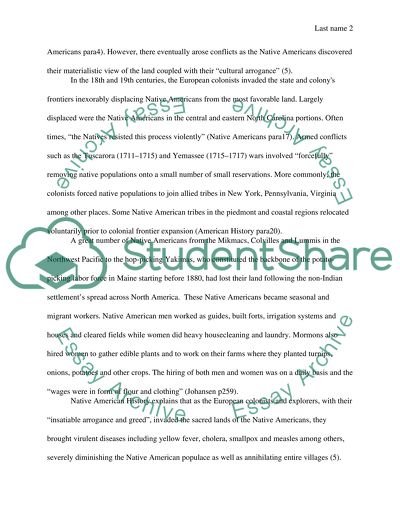Cite this document
(“The Native Americans in the 18th and 19th Centuries Essay - 1”, n.d.)
Retrieved from https://studentshare.org/history/1569968-native-americans
Retrieved from https://studentshare.org/history/1569968-native-americans
(The Native Americans in the 18th and 19th Centuries Essay - 1)
https://studentshare.org/history/1569968-native-americans.
https://studentshare.org/history/1569968-native-americans.
“The Native Americans in the 18th and 19th Centuries Essay - 1”, n.d. https://studentshare.org/history/1569968-native-americans.


